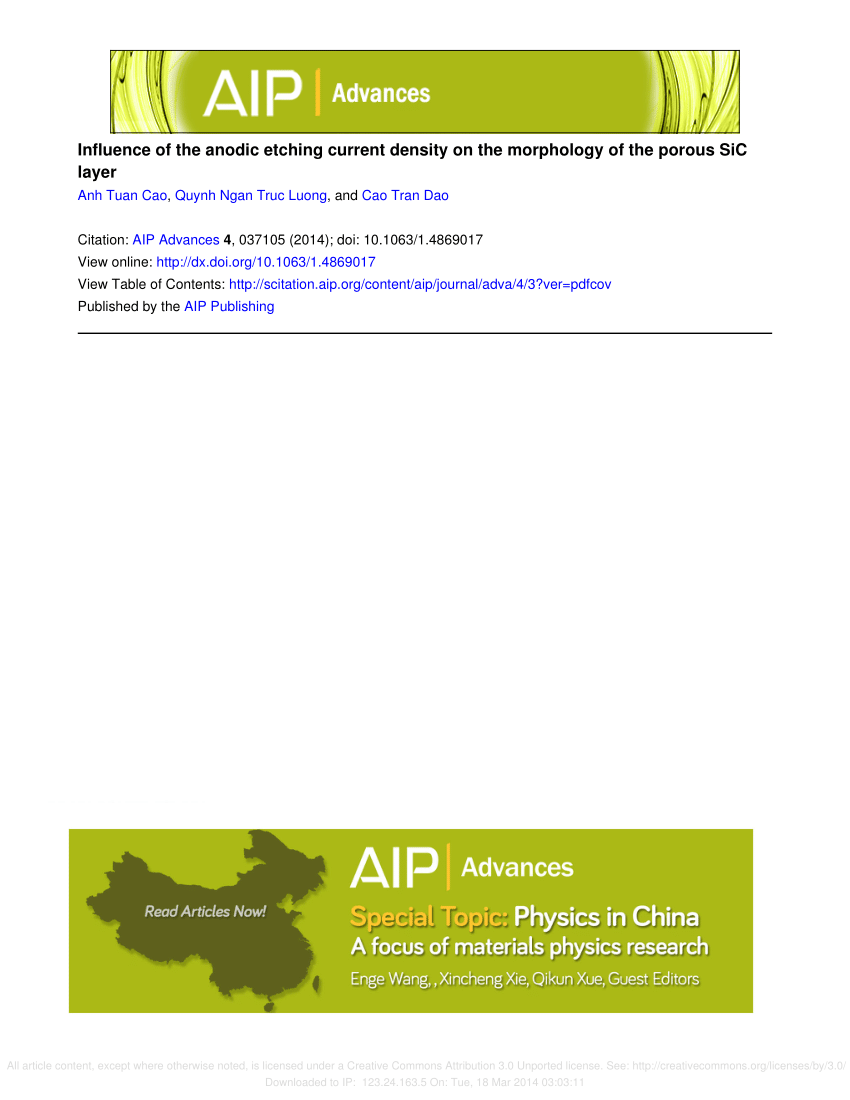电阻开关氧化锌薄膜中的平行导电丝
IF 1.4
4区 物理与天体物理
Q4 MATERIALS SCIENCE, MULTIDISCIPLINARY
引用次数: 0
摘要
这项研究考察了铜/氧化锌/氧化钛结构中的电阻开关,发现了一种异常现象,为了解氧化锌薄膜中平行导电丝的机制提供了启示。电流-电压(I-V)特性在 2 V 左右的正阈值电压时出现急剧切换,从高电阻原始状态过渡到低电阻状态,这被解释为通过电化学金属化形成了铜丝。然而,在这一形成过程之后,该器件仍处于低电阻状态,无论施加哪种极性的电压,都无法复位到高电阻状态,这表明在形成过程之后,存在着坚固、牢不可破的铜丝。使这一现象反常的是,尽管存在铜丝,但在成型周期之后的周期中观察到了微弱的双极电阻开关。正向和反向偏压扫描的 I-V 特性表明,微弱的双极电阻开关是由于与现有的不易破碎铜丝平行形成的附加铜丝造成的。利用平行导电丝模型,计算出这条附加丝的电阻率为 ∼10-7-10-5 Ω m,这表明这条附加丝很可能是由氧化锌薄膜中的氧空位而不是金属原子产生的。本文章由计算机程序翻译,如有差异,请以英文原文为准。
Parallel conducting filaments in resistive switching ZnO thin films
This study examines resistive switching in a Cu/ZnO/ITO structure, uncovering an anomalous phenomenon that provides insights into the mechanisms of parallel conducting filaments in ZnO thin films. The current–voltage (I–V) characteristics exhibit a sharp switch at a positive threshold voltage around 2 V, transitioning from a high resistance pristine state to a low resistance state, interpreted as the formation of a Cu filament via electrochemical metallization. However, after this forming process, the device remains in the low resistance state and cannot reset to a high resistance state in either polarity of the applied voltage, suggesting the presence of a strong, unbreakable Cu filament after the forming process. What makes this phenomenon anomalous is the observed weak bipolar resistive switching in the cycles following the forming cycle, despite the presence of the Cu filament. The I–V characteristics of forward- and reverse-bias sweeps suggest that the weak bipolar resistive switching results from an additional filament formed in parallel with the existing unbreakable Cu filament. Using a parallel conducting filaments model, the resistivity of this additional filament is calculated to be ∼10−7–10−5 Ω m, indicating that this filament is likely generated by oxygen vacancies rather than metal atoms in the ZnO films.
求助全文
通过发布文献求助,成功后即可免费获取论文全文。
去求助
来源期刊

AIP Advances
NANOSCIENCE & NANOTECHNOLOGY-MATERIALS SCIENCE, MULTIDISCIPLINARY
CiteScore
2.80
自引率
6.20%
发文量
1233
审稿时长
2-4 weeks
期刊介绍:
AIP Advances is an open access journal publishing in all areas of physical sciences—applied, theoretical, and experimental. All published articles are freely available to read, download, and share. The journal prides itself on the belief that all good science is important and relevant. Our inclusive scope and publication standards make it an essential outlet for scientists in the physical sciences.
AIP Advances is a community-based journal, with a fast production cycle. The quick publication process and open-access model allows us to quickly distribute new scientific concepts. Our Editors, assisted by peer review, determine whether a manuscript is technically correct and original. After publication, the readership evaluates whether a manuscript is timely, relevant, or significant.
 求助内容:
求助内容: 应助结果提醒方式:
应助结果提醒方式:


